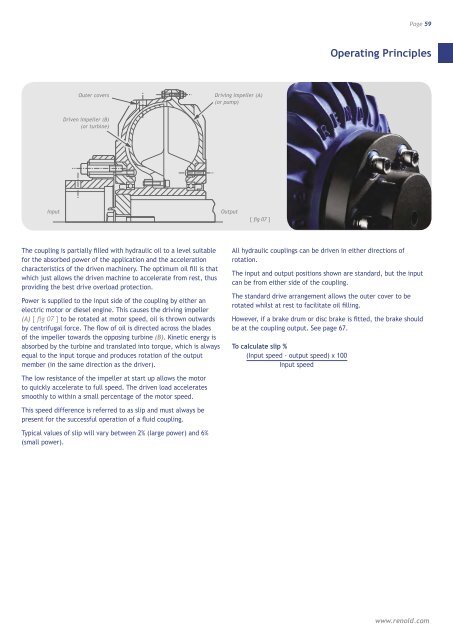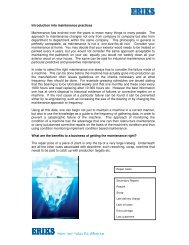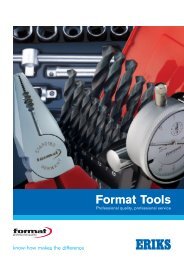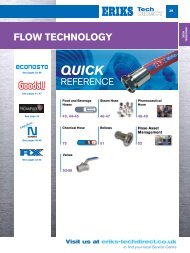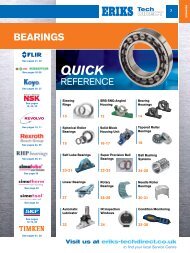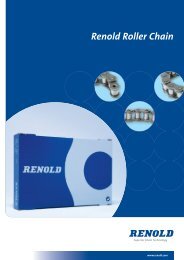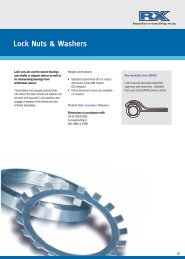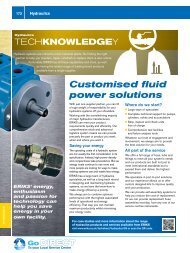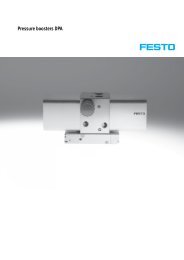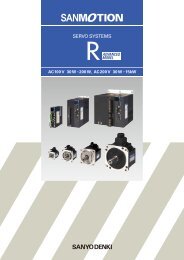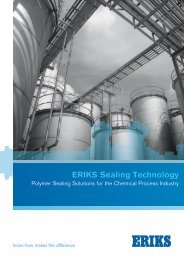Download brochure - Renold plc
Download brochure - Renold plc
Download brochure - Renold plc
- No tags were found...
Create successful ePaper yourself
Turn your PDF publications into a flip-book with our unique Google optimized e-Paper software.
Page 59Operating PrinciplesOUTER Outer COVERS coversDRIVING IMPELLER (A)Driving(OR PUMP)impeller (A)(or pump)DRIVEN Driven IMPELLER impeller (B) (B)(OR TURBINE) (or turbine)INPUT InputOUTPUT Output[ fig 07 ]The coupling is partially filled with hydraulic oil to a level suitablefor the absorbed power of the application and the accelerationcharacteristics of the driven machinery. The optimum oil fill is thatwhich just allows the driven machine to accelerate from rest, thusproviding the best drive overload protection.Power is supplied to the input side of the coupling by either anelectric motor or diesel engine. This causes the driving impeller(A) [ fig 07 ] to be rotated at motor speed, oil is thrown outwardsby centrifugal force. The flow of oil is directed across the bladesof the impeller towards the opposing turbine (B). Kinetic energy isabsorbed by the turbine and translated into torque, which is alwaysequal to the input torque and produces rotation of the outputmember (in the same direction as the driver).All hydraulic couplings can be driven in either directions ofrotation.The input and output positions shown are standard, but the inputcan be from either side of the coupling.The standard drive arrangement allows the outer cover to berotated whilst at rest to facilitate oil filling.However, if a brake drum or disc brake is fitted, the brake shouldbe at the coupling output. See page 67.To calculate slip %(Input speed - output speed) x 100Input speedThe low resistance of the impeller at start up allows the motorto quickly accelerate to full speed. The driven load acceleratessmoothly to within a small percentage of the motor speed.This speed difference is referred to as slip and must always bepresent for the successful operation of a fluid coupling.Typical values of slip will vary between 2% (large power) and 6%(small power).www.renold.com


